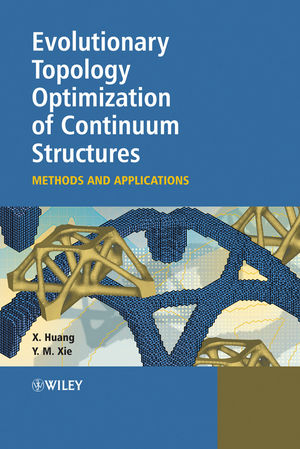Evolutionary Topology Optimization of Continuum Structures: Methods and ApplicationsISBN: 978-0-470-74653-0
Hardcover
240 pages
April 2010
 This is a Print-on-Demand title. It will be printed specifically to fill your order. Please allow an additional 10-15 days delivery time. The book is not returnable.
|
||||||
Evolutionary Topology Optimization of Continuum Structures
treads new ground with a comprehensive study on the techniques and
applications of evolutionary structural optimization (ESO) and its
later version bi-directional ESO (BESO) methods. Since the ESO
method was first introduced by Xie and Steven in 1992 and the
publication of their well-known book Evolutionary Structural
Optimization in 1997, there have been significant improvements
in the techniques as well as important practical applications. The
authors present these developments, illustrated by numerous
interesting and detailed examples. They clearly demonstrate that
the evolutionary structural optimization method is an effective
approach capable of solving a wide range of topology optimization
problems, including structures with geometrical and material
nonlinearities, energy absorbing devices, periodical structures,
bridges and buildings.
- Presents latest developments and applications in this increasingly popular & maturing optimization approach for engineers and architects;
- Authored by leading researchers in the field who have been working in the area of ESO and BESO developments since their conception;
- Includes a number of test problems for students as well as a chapter of case studies that includes several recent practical projects in which the authors have been involved;
- Accompanied by a website housing ESO/BESO computer programs at http://www.wiley.com/go/huang and test examples, as well as a chapter within the book giving a description and step-by-step instruction on how to use the software package BESO2D.
Evolutionary Topology Optimization of Continuum Structures will appeal to researchers and graduate students working in structural design and optimization, and will also be of interest to civil and structural engineers, architects and mechanical engineers involved in creating innovative and efficient structures.



